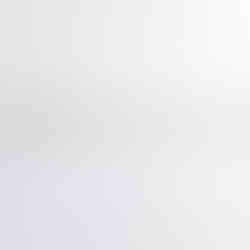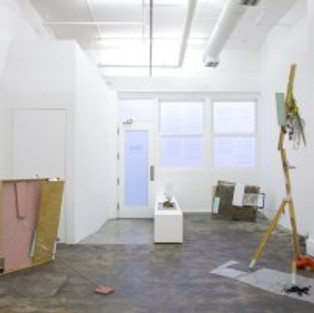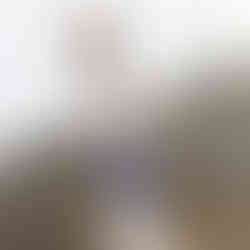Angus McCullough – “Will Have Been” at AA|LA
- artandcakela
- Feb 26, 2017
- 3 min read

Angus McCullough’s “Will Have Been” Photo Courtesy of AA|LA.
Angus McCullough: Will Have Been
By Genie Davis
Just closed at AA|LA, Angus McCullough’s “Will Have Been” is a mad scientist’s dreamscape, a solo exhibition that touches on science fiction and steam punk, life on other planets, interstellar travel, and an artistic world in which “no man has gone before.” It leads viewers on a kind of literal and figurative time travel expedition, one that relates to the artist’s own experiences of deja vu and lucid dreams.
Shiny silvers, wooden constructs, video images – the exhibition should be viewed as an enthralling whole of sculptural installations, video, writings, and photography. Stepping into the gallery space is a visit to an emotional “time lab.”

Angus McCullough’s “Will Have Been” Photo Courtesy of AA|LA. Angus McCullough’s “Will Have Been” Photo Courtesy of AA|LA.
Thematically, the works pursue and question standardized time. In this exhibition and in past installations, McCullough uses found materials to create intense and creative works which include drawings, sculpture, and poetry. Sculptural works are assemblages that appear to be in transition, raw materials poised on the verge of becoming something else. “This Was The Future,” the artist’s video work, is to some extent the heart and soul of this exhibition, covering both the creation of standard, synchronized time, and approaching the idea of time itself from a personal perspective. There is a sense of mystery in each of his works, and certainly the mysterious pull of time itself is at play in this piece.
“Human Standard Time” is an interactive work which connects a clock to a participant’s heart beat, using that beating heart as a time telling device. Written works link other work, projecting the future, assessing our relationship to the present, and predicting the effect of the past on the present moment.

Angus McCullough’s “Will Have Been” Photo Courtesy of AA|LA.
The Bennington, Vermont-based, Brooklyn-born artist has long been fascinated with time, nature, and the future. As his first solo exhibition in Los Angeles, “Will Have Been” is seemingly the perfect metaphor for our city, one which arguably continually recreates itself, and in doing so, recreates its own past. The title of the exhibition says it all, really – what will have been will also always be – but past and future are both mutable.
Presenting an intellectual, spiritual conundrum as an art exhibition is no easy task, but McCullough does well with it. Displaying clocks, “Dream Journals,” raw wooden and found-object sculptures that resemble giant insects, the exhibition is a fascinating collection of objects that represent and seem to texturally inhabit time. Found object pieces include water bottles upended and attached to rocks with an almost delicate-looking metal wire, while more delicate wire is used to create a framed series of images of the United States as intricate and complex as if they were crocheted with silk thread.

Angus McCullough’s “Will Have Been” Photo Courtesy of AA|LA.
The artist says that he wants to make work that “doesn’t have a timestamp, that strains against and interprets the present moment, and adds to itself constantly.” Professing an interest in the “underlying structures of existence,” McCullough takes on topics such as “deep time, cultural interactions with landscapes, architecture as ideological expression, and the basis of neurological perception.” His goal is not to answer questions, although it often does, but to ultimate create “a more eloquent question.”
Having taken over the AA|LA gallery space and created a time-centered yet oddly timeless world, this is an artist whose work will doubtlessly have viewers forming questions for a long time.
#losangeles #california #writing #losangelesartist #art #geniedavis #losangelesart #contemporaryart #WillHaveBeen #timetravel #southerncalifornia #AALA #photography #artgallery #videoart #gallery #dejavu #artandcake #artexhibition #installation #ArtandCakeLA #fineart #artists #artist #video #arts #luciddreams #dreamscape #artreview #installationart #sculpture #artexhibit #ArtandCulture #exhibition #time #AngusMcCullough #exhibit #losangelesgallery


















